
Bakers draw on a range of fats for their baked goods, from the rich flavor and saturated fat of butter to relatively light but flavorless shortenings and vegetable oils. Margarine occupies a middle ground, giving bakers more flavor than shortening but less saturated fat than butter. It's the most convenient butter substitute for baked goods such as muffins and quick breads, because it's the most similar to butter in its makeup.
Butter and Other Fats
Replacing butter with other fats isn't as straightforward as it appears at first glance, because butter is not a pure fat. Most brands are only 80 to 85 percent fat, with the remainder consisting mostly of water. If you replaced butter directly with a pure fat such as shortening or vegetable oil, it would sharply increase the fat in your recipe and result in a dense, oily muffin. Margarine, on the other hand, is designed to be a multi-purpose butter replacement and often contains a similar ratio of fat-to-moisture.
Choosing Your Margarine
That ratio of fat-to-moisture doesn't necessarily hold true for whipped, spreadable or "light" margarines, which typically include either more water or less fat than usual -- sometimes both -- and therefore aren't well suited for baking. Read the labels carefully before you make your purchase, looking for a brand that fits the standard butter ratio of 15 to 20 percent water. If you're avoiding dairy entirely, be aware that many brands include some dairy by-products to add flavor to the margarine. If heart health is your motivation, look for a brand without hydrogenated fats or trans-fats.
The Muffin Method
Most muffin recipes follow one of two basic patterns. Professional bakers call the first the "muffin method," appropriately enough. In this type of recipe, you mix your dry ingredients in a bowl and then add your liquid ingredients. These include your oil or butter, which must be melted and slightly cooled first. If you're substituting margarine for butter in these recipes, you don't need to make any adjustments. Measure the correct quantity of margarine into a heatproof measuring cup; microwave it until it melts; then let it cool to room temperature before adding it to the batter. Stir your ingredients until they're just mixed, then fill your muffin cups and bake them.
The Creaming Method
Some muffins call for their butter and sugar to be creamed together, as you would in a cake recipe. Oil doesn't work as a substitute in these recipes, but margarine will. When you cream the margarine and sugar in your mixer, you fill it with tiny air bubbles, left by the passage of your beater and by the sharp corners of the sugar crystals. When you bake the muffins, those air bubbles expand in the oven's heat and trap the carbon dioxide created by your baking powder. The muffins rise to a high and light consistency, thanks to the air beaten into the solid margarine.
Related Articles

Butter Substitute for Baking Scones

Softened vs. Melted Butter When Baking

Can I Put Butter in Brownie Mix Instead ...

How to Use Shortening Instead of Oil ...

Greek Yogurt Instead of Butter in Baking
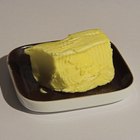
How to Store Ghee
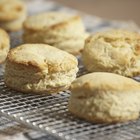
Butter Substitute for Baking Scones

How to Replace Milk and Butter in Baked ...

How Many Calories Are in a Bagel With ...

How Much Melted Shortening Do I Use in ...

Softened vs. Melted Butter When Baking

What Can I Substitute Unsalted Butter ...
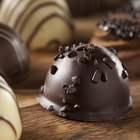
Calories in Dark Chocolate Truffles

How to Replace Ingredients to Make ...
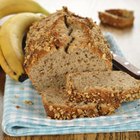
How to Replace Vegetable Oil for Baking ...
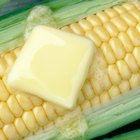
Common Food Emulsifiers
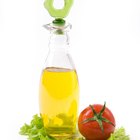
Can You Substitute Shortening for ...
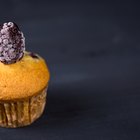
What Causes Cupcakes to Fall?
What Do Bakeries Use in Their Whipped ...

How to Make Your Own Hand Lotion With ...
References
- On Food and Cooking: The Science and Lore of the Kitchen; Harold McGee
- The Professional Pastry Chef; Bo Friberg
- The Cook's Thesaurus: Fats
Writer Bio
Fred Decker is a trained chef and prolific freelance writer. In previous careers, he sold insurance and mutual funds, and was a longtime retailer. He was educated at Memorial University of Newfoundland and the Northern Alberta Institute of Technology. His articles have appeared on numerous home and garden sites including GoneOutdoors, TheNest and eHow.
Photo Credits
Medioimages/Photodisc/Photodisc/Getty Images